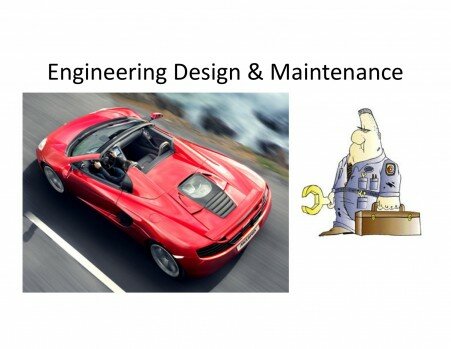Learning Journey
LEARNING JOURNEY PROJECTS
biomimicrySA began supporting a Learning Journey of workshops and projects from 2012. The aim of the Learning Journey is to support capacity building for biomimicry practitioners in South Africa. To qualify individuals need to complete a number of workshops run by biomimicrySA and partners - each of which build on the biomimicry knowledge and skills of local biomimicry practitioners. Workshops include:
- Introduction to Biomimicry run by biomimicrySA
- Biomimicry Life's Principles run by biomimicrySA
- The Business of Biomimicry run by Elspeth Donovan of the Cambridge Program for Sustainability Leadership
- Systems Thinking and Biomimicry run by Genius Works & biomimicrySA
- Biomimicry Expedition (optional)
- and others...for more information on the workshops see the courses page.
In addition to the workshops, participants in the Learning Journey work on a 6 month practical project with mentoring support from the biomimicrySA team. Some of the project topics are listed below. Projects include integrating biomimicry into your field of work/education curriculum, community projects, design innovation, research, etc.
Learning Journey Projects 2012
Some of the projects that received mentorship from biomimicrySA in 2012 included:
- Urban agriculture in the Johannesburg CBD - a biomimicry perspective. More info on this project is included below.
- Learning from nature to enhance Spier biodynamic farm's wastewater management system. A summary of the results of this project will be posted shortly.
- A biomimicry approach for pathogen removal from wastewater. Results will be published as a Water Tool online shortly (through the Water Research Commission).
- A biomimicry approach for water flow in constructed wetlands. Results will be publishes as a Water Tool online shortly (through the Water Research Commission).
-
Biomimicry Applied to Urban Design: Originally aimed at rethinking urban growth in the City of Cape Town - this project was adapted into the design of the city of Abuja in Nigeria. See more about this inspiring project here.
- How does nature take collective decisions - applying biomimicry in organisations.
- Disaster management - how can nature enhance resilience before and after disaster?
- Designing innovative biomimicry education materials inspired by nature. The Biomimimajig developed by the design team on this project will be published in mid 2013.
- Biomimicry applied to the design of an eco-village in the Eastern Cape.
- Redesigning a surfboard using biomimicry (can one be designed that meets all of Life's Principles?). Project will be completed in March 2013.
- Rethinking the plastic bag - how would nature make plastic....?
- Engineering design and maintenance - how would nature inspire a different approach?
1. A Growing City - Agriculture and Food Security in a Growing Urban Context (Johannesburg CBD), IAN TARBOTON, Masters in Architecture

There aredifferent kinds of growth, some of which are beneficial to life and some not. Sometimes it may look good on the surface but underneath the surface the roots are rotten and diseased. Physical growth is often related to food and resources, while mental health is related to stress. What can be found is that often different types of growth are in competition with one another. This is what is happening between our urban industrial systems and our food systems. They are competing for the same land at the expense of each other.
This thesis delves into the various systems that affect urban growth and agricultural growth in the South African context. When looking at food security in the South African context, one finds that even though the country as a whole is food secure, a large portion of the population are still hungry and malnourished. One finds further that food insecurity is not an isolated problem – there are numerous issues of concerns which share the same roots. These issues and concerns are in fact linked to the stresses that can affect wellbeing.
Thus this thesis explores how physical health and mental wellbeing can come together in the production of a farm which heals a scar in the inner city landscape. Through considering the effects that urban conditions have on humans in contrast to the effects that the natural environment has on humans, this thesis addresses a design problem which seeks to unite the
two extremes. It seeks to join the city with agriculture, allowing the city to continue expanding without losing arable land, and agriculture can improve the quality of the inner city. The design is formulated through response to context and climate, using biomimicry as a tool to create conditions conducive to life.
For more information contact Ian Tarboton: symphian[a]gmail.com
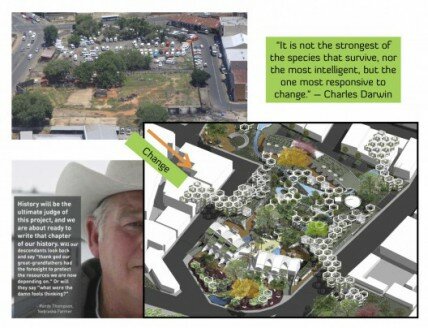
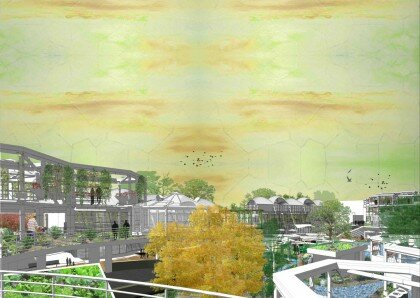
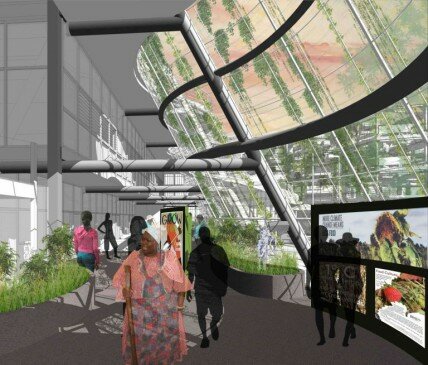
2. Applying Biomimicry to Wastewater Treatment in a Biodynamic Winery - Stellenbosch (NADIA SANETRA & MARGAUX THOMAS)
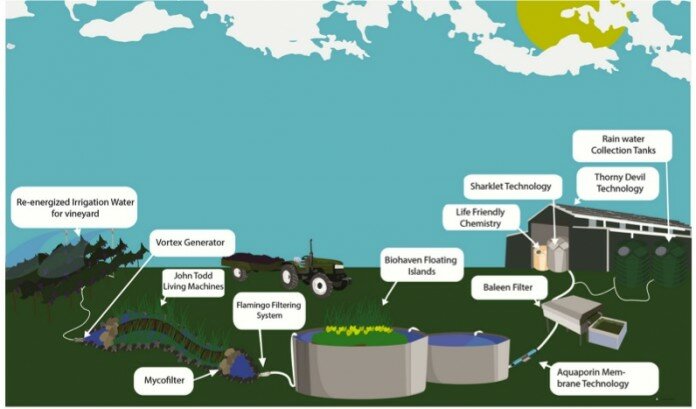 This project is part of the first ever Biomimicry South Africa Learning journey. On this journey students learn and apply the Biomimicry methodology to a real life challenge.
This project is part of the first ever Biomimicry South Africa Learning journey. On this journey students learn and apply the Biomimicry methodology to a real life challenge.
At the start of the project, after a visit and workshop by Fungi Perfecti, the focus was largely on mycofiltration for the treatment of winery wastewater. From here the investigation into Biomimetic technologies quickly expanded to include other ideas and designs. Throughout the project there was enthusiastic participation from experts in the field of water treatment including Andrew Hulsman from HWT, Nirmala Nair from ZERI, Jacques Rossouw, Environmental Manager at Distell and Alan Liebenberg Manager at Intaka Island, Century City.
The project looked at current and emerging Biomimetic techologies and how they could be applied to the farm's wastewater treatment system. The list of technolgies mentioned is by no means complete. New designs are being brought onto the market all the time. It is however our intention to make a contribution to the rapidly growing and evolving dicipline of Biomimicry. Our most important discovery has been that water, like soil, should be regarded as a living organism.
For more information on this project, contact Nadia: nadiasanetra[a]googlemail.com
3 & 4. A Biomimicry Approach for Pathogen Removal & Water Flow in Water Treatment
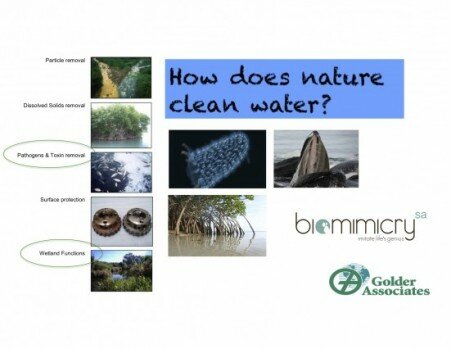
One of the key findings of the research carried out was that whilst a wealth of biological informationis available, it is not available in a format that can be easily sourced by design engineers. Using the Biomimicry methodology, the project teams have prepared a compilation of natural processes and organisms performing the above watertreatment functions and sorted this information under the functions performed into an electronic Water Tool (which includes additional water cleaning functions). These two Learning Journey projects were integrated into the larger Water Research Commission Project on Biomimicry applied to Water Treatment. The Water Tool will be published as part of this larger project. The details of research were conducted as part of the Learning Journey projects, with the aim of building further capacity for biomimicry research.
5. Biomimicry Applied to Urban Design
Originally aimed at rethinking urban growth in the City of Cape Town - this project was adapted into the design of the city of Abuja in Nigeria. See more about this inspiring project here. Shannon Royden-Turner of Informal South explored "Imagining an abundant and flourishing future for African cities." She has pioneered the integration of biomimicry into the City of Abuja masterplan design, Nigeria. She's also currently heading up our Genius of Place project in the Western Cape.
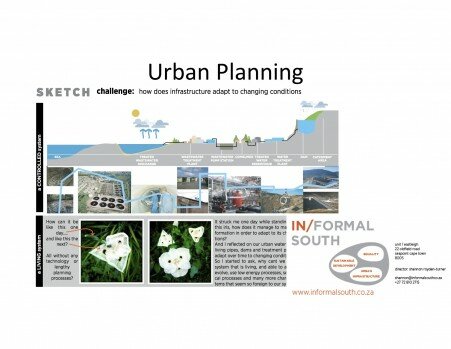
6. How does nature take collective decisions?
Applying biomimicry in organisations. Marc & Catherine of Ingenious People's Knowledge concluded their project for biomimicry applied to organisations. Their research focused on "how does nature make collective decisions?"
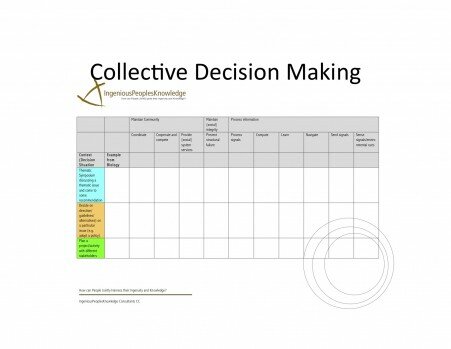
7. Disaster management - how can nature enhance resilience before and after disaster?
This team aims to take their research and develop it further into applications locally and potentially worldwide. The initial research focused on communication and aimed to apply the same biomimicry process to other key aspects of resilience. "In this research we are equating a human disaster event to an ecosystem disturbance in nature. The challenge for society is to be highly adaptive and appropriately responsive to a system disturbance. Success is measured by the human systems ability to function effectively and meet the needs of its citizens. For the purpose of this research project we focus on the challenge of communication and information sharing. We suggest that communication is an indicator of resilience to system level risks. Within the disaster management discourse risk is defined as a hazards x vulnerabilities, where risk can be reduced by mitigating hazards or reducing vulnerabilities. Communication is an imperative component of both disaster risk reduction and disaster response activities. These communication processes can be compared to communication processes between eusocial organisms. This research has explored the Meta question: What are the lessons from nature that we can infer for designing effective systems for disaster risk reduction and response?”
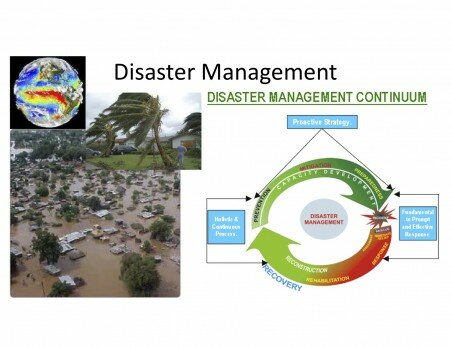
8.Designing innovative biomimicry education materials inspired by nature
This "biomimimajig" concept will be used as educational resources for local and international educators, including workshops. It's also being developed into an App.
![]()
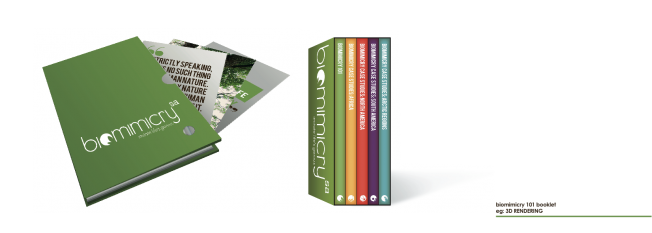
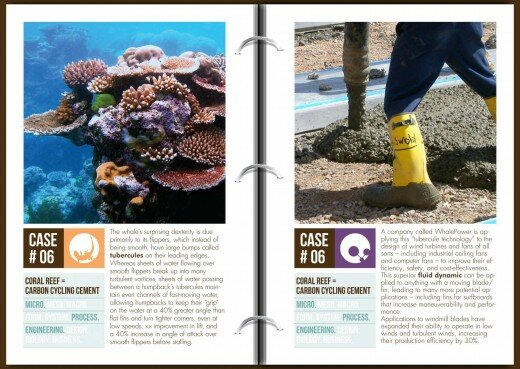
8. Biomimicry applied to the design of an eco-village in the Eastern Cape
Project to be completed
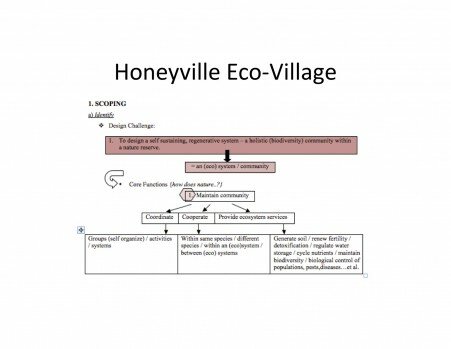
9. Redesigning a surfboard using biomimicry
Can a surfboard be designed that meets all of Life's Principles?. Project to be completed.

10. Rethinking the plastic bag - how would nature make plastic?
Project to be completed
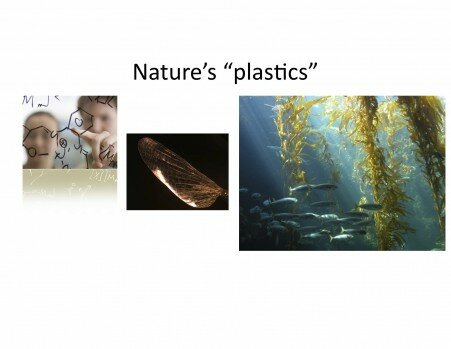
11.Engineering design and maintenance - how would nature inspire a different approach?
